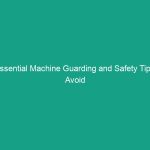Good Morning Team!
Today, we’re going to discuss an essential aspect of Workplace Safety: Dynamic Risk Assessment. This practice is vital for adapting to changing conditions, ensuring that we all remain safe while we work. As we navigate our daily tasks, understanding how to assess risks dynamically can significantly impact our Safety and well-being.
Understanding Dynamic Risk Assessment
Dynamic Risk Assessment is the process of continuously evaluating risks while performing tasks, particularly when conditions change unexpectedly. Unlike static assessments, which are conducted before a job starts, dynamic assessments require vigilance and adaptability throughout the job. This approach is crucial because conditions on-site can change rapidly, and recognizing these changes can prevent accidents and injuries.
Many employees may think that once a risk assessment is done, they don’t need to think about it again. However, it’s essential to understand that risk assessment is an ongoing process, not a one-time event. By remaining aware of our surroundings and potential Hazards, we can make informed decisions that protect ourselves and our colleagues.
Key Hazards, Risks, and Safety Considerations
Dynamic Risk Assessment is particularly important in environments where conditions can shift quickly, such as construction sites, factories, or during emergency situations. Common hazards include:
- Environmental Changes: Weather conditions, such as rain or extreme heat, can alter risks significantly.
- Equipment Failures: Machinery might malfunction, requiring immediate reassessment of safety protocols.
- Human Behavior: Employees may work differently based on fatigue or distractions, impacting safety.
Ignoring these dynamic risks can lead to real-world consequences, such as accidents resulting in injuries or even fatalities. For instance, a construction worker may overlook a sudden change in scaffolding conditions, leading to a fall. Recognizing these changes and assessing associated risks can prevent such incidents.
Best Practices, Procedures, & Actionable Advice
To effectively implement Dynamic Risk Assessment, follow these Best Practices:
- Stay Aware: Regularly observe your surroundings and stay alert to changes in the work Environment.
- Communicate: Discuss potential hazards with your team and encourage them to speak up if they notice something amiss.
- Reassess Frequently: Make it a habit to pause and evaluate risks before and during tasks, especially if conditions change.
- Document Changes: Keep a record of any changes in the work environment and how they were addressed.
For example, imagine you’re working on a project outdoors, and it starts to rain. This is a signal for you to reassess the risks associated with slips, falls, and equipment stability. Taking a moment to evaluate these risks will ensure that everyone remains safe during adverse weather conditions.
Regulations, Standards, and Compliance
Understanding the legal framework surrounding Dynamic Risk Assessment is essential. Regulations such as OSHA (Occupational Safety and Health Administration) provide guidelines that mandate regular risk assessments and compliance with safety Standards. Companies that adhere to these standards not only protect their employees but also mitigate legal risks associated with workplace accidents.
Compliance is critical because it cultivates a culture of safety and responsibility. When we follow these guidelines, we are not just following the law; we’re also creating a safer working environment for ourselves and our colleagues.
Employee Engagement & Discussion
Let’s take a moment to discuss. What safety challenges have you encountered related to Dynamic Risk Assessment? Have you ever noticed a change in conditions that could have impacted your safety? Sharing these experiences can help us learn from each other and reinforce our commitment to safety.
Conclusion & Key Takeaways
In summary, understanding and implementing Dynamic Risk Assessment is crucial for maintaining safety in the workplace. By staying aware, communicating effectively, reassessing frequently, and adhering to Regulations, we can adapt to changing conditions and protect ourselves and our colleagues from hazards.
Let’s prioritize safety in everything we do. Remember, your safety is in your hands, and by being proactive, we can create a safer work environment. Thank you all for your attention and your commitment to safety!


